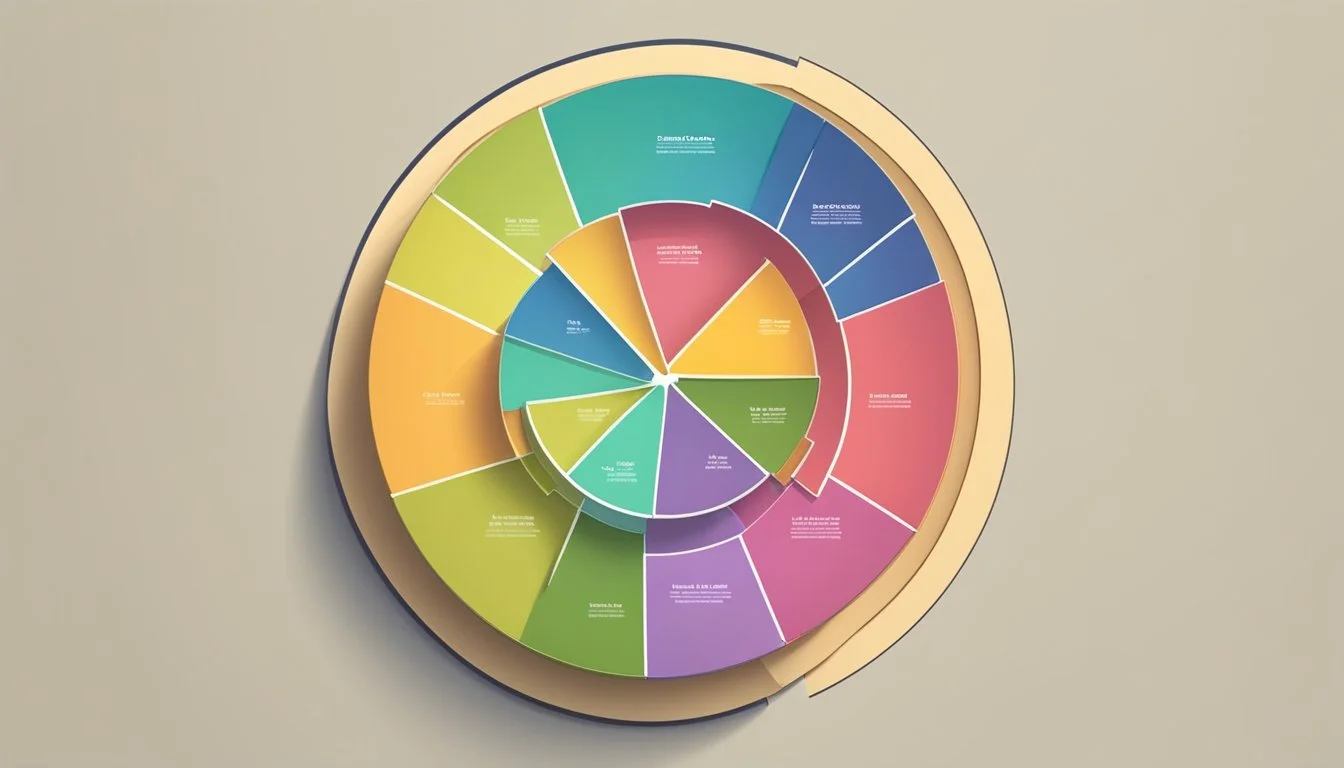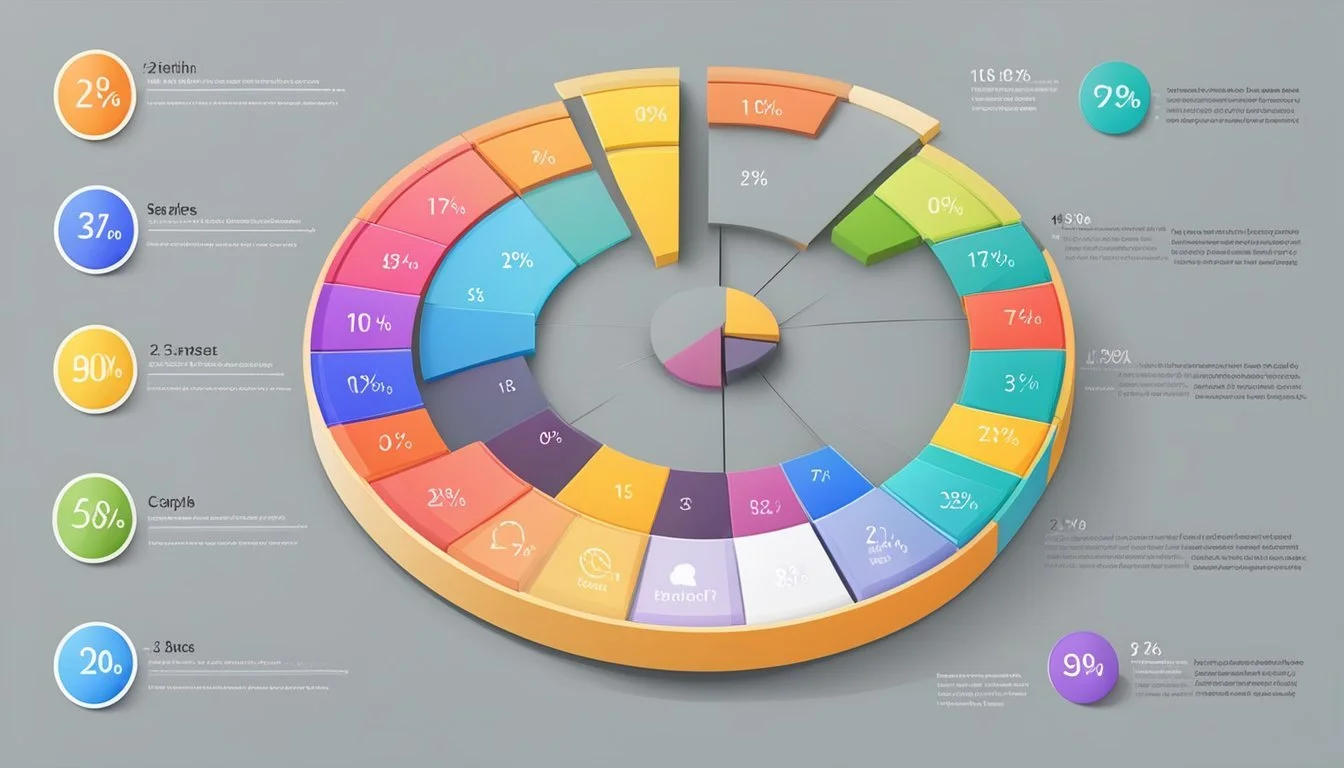Population Distribution of Personality Types
Personality types offer fascinating insights into human behavior and characteristics. The Myers-Briggs Type Indicator (MBTI) categorizes individuals into 16 distinct personality types based on their preferences in four key areas: extraversion vs. introversion, sensing vs. intuition, thinking vs. feeling, and judging vs. perceiving.
The most common personality type is ISFJ, comprising approximately 14% of the general population. ISFJs, known as "The Protectors," are characterized by their introversion, sensing, feeling, and judging traits. This type is particularly prevalent among women and is recognized for its nurturing and supportive nature.
On the opposite end of the spectrum, INFJ is considered the rarest personality type, making up only about 1.5% of the population. INFJs, often called "The Advocates," are known for their strong values and vision-driven approach to life. Understanding the distribution of personality types can provide valuable insights into societal dynamics and individual differences.
Basics of Personality Types
Personality types provide a framework for understanding individual differences in behavior, preferences, and decision-making styles. The Myers-Briggs Type Indicator (MBTI) is a widely used system for categorizing personalities based on specific traits and cognitive functions.
Understanding the Myers-Briggs Type Indicator (MBTI)
The MBTI is a psychological assessment tool developed by Isabel Briggs Myers and Katharine Briggs. It classifies individuals into 16 distinct personality types based on four dichotomies:
Extraversion (E) vs. Introversion (I)
Sensing (S) vs. Intuition (N)
Thinking (T) vs. Feeling (F)
Judging (J) vs. Perceiving (P)
These four pairs combine to create the 16 personality types, each represented by a four-letter code (e.g., ISFJ, ENTP). The MBTI aims to help people better understand themselves and others by identifying their preferences in how they perceive the world and make decisions.
Categorization of Personality Traits
The MBTI categorizes personality traits into four main areas:
Energy source: Extraverts gain energy from social interactions, while introverts recharge through solitude.
Information gathering: Sensing types focus on concrete facts and details, whereas intuitive types prefer abstract concepts and patterns.
Decision-making: Thinking types prioritize logic and objective analysis, while feeling types emphasize values and emotional considerations.
Lifestyle preference: Judging types prefer structure and planning, whereas perceiving types favor flexibility and spontaneity.
These categories help explain how individuals process information, interact with others, and approach various aspects of life. Understanding these traits can lead to improved self-awareness and better interpersonal relationships.
Prevalence of Personality Types
Personality types vary in frequency across populations, with some types being more common than others. Gender differences and population-scale factors also influence the distribution of personality types.
Statistics and Distribution
The most common personality type is ISFJ, making up about 13-14% of the population. ESFJs and ISTJs are also prevalent, each accounting for approximately 12% of people. On the other end of the spectrum, INFJs are considered the rarest type, comprising only 1-2% of individuals. ENTJs and INTPs are also relatively uncommon, each representing around 3% of the population.
Extroverted types tend to be slightly more common than introverted types overall. Sensing types outnumber intuitive types by a ratio of about 3:1 in most populations. Thinking and feeling preferences are more evenly split, with a slight edge toward feeling types.
Gender Distribution Among Types
Certain personality types show notable gender differences in prevalence. For example, ISFJ and ESFJ types are more common among women, while ISTJ and ESTJ types are more prevalent in men. INTJs and ENTPs tend to have a higher proportion of males, whereas INFPs and ENFJs often have a higher percentage of females.
These gender differences may reflect societal influences and expectations. However, it's crucial to note that any personality type can occur in either gender, and individual variations exist within each type.
Understanding Population Scale
When examining personality type distributions, it's important to consider population scale. Even the rarest types still represent millions of individuals worldwide. For instance, if INFJs make up 1% of the global population, that's still over 75 million people.
Regional variations can affect type distributions. Some cultures may have higher percentages of certain types due to social norms or values. Urban vs. rural environments might also influence type prevalence.
Age can play a role in personality type distribution. Some types may become more or less common in certain age groups due to developmental factors or generational differences.
Personality Types and Social Dynamics
Personality types shape how individuals interact with others and navigate various social environments. They influence communication styles, relationship dynamics, and professional interactions.
Interpersonal Relationships
ISFJ individuals often form deep, nurturing relationships. They value harmony and are attentive to others' needs. In friendships, ISFJs provide steady support and reliability.
ENTJs tend to take charge in relationships. Their confident and decisive nature can lead to strong partnerships, but may also create tension with less assertive types.
INFPs seek authentic connections. They value deep emotional bonds and often engage in meaningful conversations. Their idealistic nature can sometimes lead to challenges in practical aspects of relationships.
ENFJs excel at understanding and motivating others. They often play the role of mediator in conflicts and are skilled at bringing people together. Their charisma and empathy make them natural leaders in social groups.
Professional Environments
In the workplace, personality types significantly impact team dynamics and individual performance. ISFJs thrive in supportive roles, often excelling in healthcare, education, and customer service.
ENTJs gravitate towards leadership positions. Their strategic thinking and goal-oriented approach make them effective in management and executive roles.
INFPs often find fulfillment in creative or humanitarian fields. Their idealism and empathy can be assets in counseling, writing, or non-profit work.
ENFJs excel in roles involving people management and development. Their ability to inspire and motivate others makes them effective in human resources, teaching, and sales positions.
Effective communication in professional settings often requires adapting to different personality types. Understanding these differences can lead to improved collaboration and productivity in diverse teams.
Detailed Personality Type Profiles
The 16 personality types are grouped into four categories based on shared traits and tendencies. Each type has distinct characteristics that shape how individuals interact with the world and others.
Guardians: ISTJ, ISFJ, ESTJ, ESFJ
Guardians are practical, dutiful, and traditionalist. ISTJs are logical and organized, excelling in structured environments. ISFJs are nurturing and detail-oriented, often putting others' needs first. ESTJs are natural leaders with strong organizational skills. ESFJs are social and caring, thriving in harmonious settings.
These types share a preference for stability and concrete facts. Their cognitive functions prioritize sensing and judging, leading to a focus on present realities and established systems.
Guardians' strengths include reliability, responsibility, and attention to detail. They often excel in roles that require consistency and adherence to rules.
Artisans: ISTP, ISFP, ESTP, ESFP
Artisans are spontaneous, adaptable, and hands-on learners. ISTPs are skilled troubleshooters with a knack for understanding how things work. ISFPs are creative and sensitive, often expressing themselves through art or music. ESTPs are energetic risk-takers who thrive in fast-paced environments. ESFPs are charismatic performers who enjoy being the center of attention.
These types share a preference for living in the moment and adapting to new situations. Their dominant cognitive functions involve sensing and perceiving, leading to a focus on immediate experiences and flexibility.
Artisans' strengths include practical problem-solving, creativity, and quick reflexes. They often excel in roles that require adaptability and hands-on skills.
Rationals: INTJ, INTP, ENTJ, ENTP
Rationals are analytical, strategic, and innovation-focused. INTJs are visionary planners with a talent for complex problem-solving. INTPs are creative theorists who enjoy exploring abstract concepts. ENTJs are decisive leaders with a drive for efficiency and achievement. ENTPs are inventive entrepreneurs who thrive on new ideas and possibilities.
These types share a preference for logic and intellectual pursuits. Their dominant cognitive functions involve intuition and thinking, leading to a focus on big-picture concepts and objective analysis.
Rationals' strengths include strategic thinking, innovation, and intellectual curiosity. They often excel in roles that require long-term planning and conceptual problem-solving.
Idealists: INFJ, INFP, ENFJ, ENFP
Idealists are empathetic, value-driven, and focused on personal growth. INFJs are insightful counselors with a talent for understanding others' motivations. INFPs are imaginative idealists who seek harmony and authenticity. ENFJs are charismatic mentors with a gift for inspiring others. ENFPs are enthusiastic innovators who value creativity and personal connections.
These types share a preference for exploring human potential and relationships. Their dominant cognitive functions involve intuition and feeling, leading to a focus on future possibilities and empathetic understanding.
Idealists' strengths include empathy, creativity, and a drive for personal growth. They often excel in roles that involve helping others and promoting positive change.
Comparative Analysis of Personality Types
Personality types vary widely in their prevalence and characteristics. This analysis examines the distribution and key traits of different types across the population.
Commonality vs Rarity
ISFJ and ESFJ are among the most common personality types, each comprising around 12-14% of the population. These types share traits like sensing and feeling, which align closely with societal norms.
In contrast, INFJ is considered the rarest type, making up only 1.5% of people. ENTJ and INTJ follow closely as uncommon types.
The scarcity of certain types can be viewed from two perspectives:
Rare types may possess unique talents in high demand
Individuals with rare types may find it challenging to connect with like-minded people
Personality Dynamics: Sensors vs Intuitives
Sensors make up about 70-75% of the population, while intuitives account for 25-30%. This significant difference impacts how people perceive and process information.
Sensors:
Focus on concrete facts and details
Prefer practical, hands-on experiences
Tend to be more present-oriented
Intuitives:
Look for patterns and abstract connections
Enjoy theoretical concepts and possibilities
Often think about future implications
This disparity can lead to communication challenges between the two groups, as they approach problems and decisions differently.
Thinking & Feeling: Decision-Making Processes
The thinking-feeling dimension is more evenly split, with a slight preference for feeling in the general population. Approximately 55-60% of people lean towards feeling, while 40-45% favor thinking.
Thinkers:
Prioritize logic and objective analysis
Strive for fairness and consistency
May appear detached or impersonal
Feelers:
Consider emotions and personal values
Emphasize harmony and individual circumstances
Can be seen as overly sensitive or subjective
This balance allows for diverse approaches to problem-solving and interpersonal interactions in society.
Judging & Perceiving: Lifestyle Preferences
The judging-perceiving split is relatively even, with a slight edge for judging types. About 55% of people prefer judging, while 45% lean towards perceiving.
Judging types:
Value structure and planning
Prefer closure and decisiveness
Tend to be organized and punctual
Perceiving types:
Embrace flexibility and spontaneity
Keep options open
Often adapt well to changing circumstances
This distribution ensures a balance between those who maintain order and those who adapt readily to new situations, contributing to societal stability and innovation.
Impact of Personality Types on Individual Strengths
Personality types shape our natural talents and challenges, influencing how we approach work, relationships, and personal growth. Different types exhibit unique strengths that can be leveraged for success in various areas of life.
Natural Affinities and Talents
Extroverted personalities often excel in social situations, demonstrating strong communication and networking skills. They tend to be energetic and adaptable, thriving in dynamic environments. Introverts, on the other hand, showcase deep focus and analytical abilities. They excel in roles requiring concentration and independent work.
Sensing types display practical problem-solving skills and attention to detail. Their ability to gather and apply concrete information makes them valuable in fields like engineering or finance. Intuitive individuals shine in creative and strategic thinking. They often generate innovative ideas and see connections others might miss.
Feeling types bring empathy and interpersonal skills to the table. Their emotional intelligence allows them to excel in team-building and customer service roles. Thinking types demonstrate logical reasoning and objectivity, making them well-suited for analytical and decision-making positions.
Challenges and Growth Opportunities
Each personality type faces unique challenges that present opportunities for personal development. Extroverts may need to cultivate patience and improve their listening skills. Introverts can benefit from pushing themselves to engage more in group settings and public speaking.
Sensing types might struggle with abstract concepts or long-term planning. Developing their intuition can help them see the bigger picture. Intuitive individuals sometimes overlook important details, so practicing mindfulness and improving organizational skills can be beneficial.
Feeling types may need to work on maintaining objectivity in decision-making processes. Learning to separate emotions from facts can enhance their professional effectiveness. Thinking types can grow by developing empathy and considering the human element in their logical approaches.
Recognizing these challenges allows individuals to turn potential weaknesses into strengths through targeted self-improvement efforts.
Applications of Personality Type Knowledge
Personality type knowledge offers valuable insights for various aspects of life. It provides tools for enhancing educational experiences, optimizing workplace dynamics, and fostering personal growth.
Educational Settings
Teachers can utilize personality type information to tailor their instructional methods. By understanding students' preferences, educators can create more engaging lessons and provide effective feedback.
Personality type insights help students identify their learning styles. This awareness enables them to develop study strategies that align with their cognitive strengths.
Career counselors in schools use MBTI assessments to guide students in exploring suitable career paths. This tool helps match personality traits with potential professions, aiding in informed decision-making for future careers.
Workplace Strategies
Companies employ personality type knowledge to build balanced teams. By assembling diverse personality types, organizations can enhance problem-solving and innovation.
Managers use MBTI insights to improve communication with team members. Understanding personality preferences helps leaders adapt their management styles to individual needs.
Human resource departments utilize personality type data in recruitment processes. This information aids in placing candidates in roles that align with their natural strengths and preferences.
Personal Development
Individuals use personality type knowledge for self-reflection and growth. Understanding one's MBTI type can reveal personal strengths and areas for improvement.
MBTI insights help people identify potential sources of stress and develop coping mechanisms. This awareness enables individuals to create personalized stress management strategies.
Personality type knowledge enhances interpersonal relationships. By recognizing different communication styles, individuals can improve their interactions with others, fostering stronger personal and professional connections.
Limitations and Critiques of Personality Typologies
Personality typologies face several significant limitations and critiques within the field of psychology. One primary concern is the oversimplification of complex human personalities into rigid categories.
Critics argue that these systems fail to capture the full diversity of individuals and their unique traits. Personality is often viewed as more fluid and multifaceted than typologies suggest.
The validity and reliability of personality type assessments have also been questioned. Some researchers point out that test results can be inconsistent over time or influenced by temporary moods and circumstances.
Another criticism centers on the potential for stereotyping and pigeonholing individuals based on their assigned type. This may lead to self-fulfilling prophecies or limit personal growth and development.
Some psychologists argue that dimensional models of personality provide a more accurate representation of human traits. These approaches view personality characteristics as existing on a spectrum rather than in distinct categories.
The scientific basis for certain popular typologies, such as the Myers-Briggs Type Indicator, has been challenged. Critics note a lack of empirical evidence supporting the validity of some widely used personality type systems.
Despite these criticisms, proponents argue that personality typologies can offer valuable insights when used as general frameworks rather than definitive classifications.
Conclusion
Personality type distributions offer valuable insights into population diversity. The MBTI framework categorizes individuals into 16 distinct types, each with varying prevalence.
ISFJ emerges as one of the most common types, comprising 13.8% of the general population. Women make up the majority of ISFJs.
On the opposite end, INFJ stands out as the rarest personality type. Only 1.5% of people fall into this category, characterized by introverted, intuitive, feeling, and judging traits.
Other common types include INFP, ESFJ, ISTJ, ISFP, and ESTJ. The rarity of certain types like ENTJ and INTJ suggests unique skill sets that may be in high demand.
Understanding these distributions can aid in personal growth, career planning, and relationship dynamics. It's crucial to remember that personality types are fluid and can evolve over time.
While these percentages provide a general overview, individual experiences and cultural factors also play significant roles in shaping personalities. Embracing diversity in personality types enriches our collective human experience.





